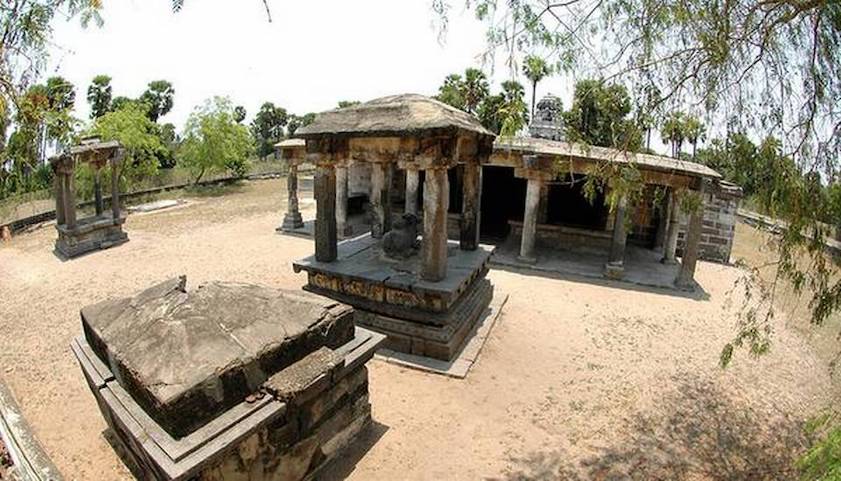Motupalli
This is a collection of articles archived for the excellence of their content. |
Veerabhadraswamy temple
2019/ Steps to revive

From: March 4, 2019: The Hindu
Located in Prakasam district, it remains closed after Archaeology Dept. took it over for conservation
Motupalli, where a historic temple of Veerabhadraswamy, a fiery form of Lord Siva is located, has been an important port for centuries with flourishing trade with South Asian countries especially during the medieval period. But the heritage site in Chinnaganjam mandal of Prakasam district presents a picture of neglect now.
The temple, constructed during the regime of the Cholas, is an Indologists’ delight with stone inscriptions in Telugu and Tamil and awe-inspiring Panchaloha idols.
The temple remains closed ever since the Department of Archaeology took it over for conservation and preservation of the archaeological marvel in the wake of discovery of Panchaloha idols of gods and goddesses including that of Lord Nataraja in dancing posture and Bhadrakali in the 1970s from nearby farms, after idol-lifters tried to lay their hands on them in view of the demand for such idols overseas.
People of the sleepy village now yearn for reviving the past glory of the temple by reinstalling the idols in the historic temple and promotion of temple tourism in a big way as Motupally is well connected by road and rail network on the east coast.
“We have collected about Rs. 2 lakh for the purpose and taken up the matter with the State Endowments Department for contribution from the Common Good Fund. But more funds are required to revive the temple,” says former village sarpanch K. Govindu who has been impressing upon the people in and around the village to contribute their mite as an inactive temple in the locality is not good for the community. They are sentimentally-attached to Lord Veerabhadraswamy and make it a point to name their children after the god, he says. Pilgrims in large numbers visit the non-descript village close to the east coast highway especially during the auspicious Maha Sivratri and Karthika Pournami to take a holy dip. They return disappointed without the darshan of Lord Veerabhadraswamy, explains another villager T.Venkata Subbaiah.
Most of the antique idols were shifted either to the State Archaeology Museum or to the Victoria Museum, Vijaywada. The villagers’ demand is that they should be brought back and reinstalled, says a village elder P.V. Rama Rao The temple in Rudramambapuram, a hamlet of Motupalli village panchayat, was an important cultural centre then. The hamlet gets its name from the Kakatiya queen Rudrama Devi of Kakatiya dynasty.
Excavations
Excavations taken up by the Archaeology Department had led to unearthing of Chinese ware and copper coins of the Ming dynasty, coins belonging to the Chola era and bronze articles and pottery. The importance of the village, also referred to as ‘Mohanagiripuram’ can be appreciated from the accounts of Italian merchant Marco Polo who visited the place in the 13th century.
Its prominence continued during the regimes of Reddy kings as also Bahmini Sultans before fading with the advent of the Britishers on the East coast who focused their trading activities mostly from Machilipatnam.